Iran History
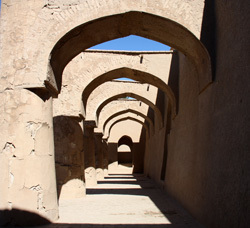
damghan
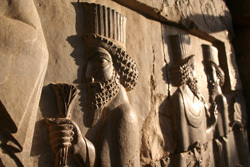
Shiraz-Tour
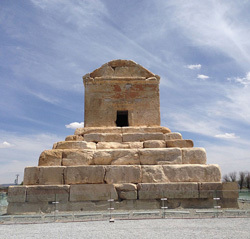
Shiraz-Tour

Shiraz-Tour
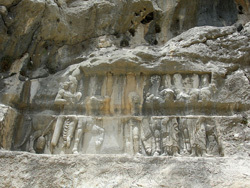
Shiraz-Tour
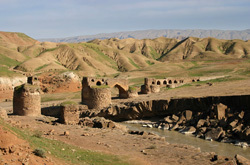
ilam-tour
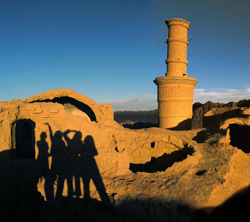
kharanaq
Iran History before Islam: According to documents, from the ancient times, Iran Flat has been residential. As the obtained works show, Iran tribes have lived along the rivers, springs, & also Zagros Mountain, as well as Kashan hill of Siyalk & hill of Hesar.
Current documents show that around 12000 years ago, i.e. the era of New Stone without Clay, the historical hill of Choqa Golan near Mehran town, Elam province, has been one of the first agricultural origins. It seems that favorable climate & abundant of products, have resulted in reviving the innovation feeling & modernistic enthusiasm of that era people.
The effects obtained from the Archeological sites of Damqan, Tarang Tappe of Gorgan, Haft Cheshme/ Seven Springs of Gorgan, Hasanlu Hill, Marlik Hill of Roodbar & Shush, show the Antiquity of the fifth millennium BC.
Elamite: On the 3rd millennium BC, in huge parts of Zagros (West) including Lorestan, Pish Kouh, Posht Kouh, & some South parts of Khuzestan till Kerman, the civilization of Elamite was born; which lasted till 1st millennium AD. The capital of them was Shoush; afterwards of which became the winter capital of Achaemenid.
Elamite, had commercial relationship with Town governments of Mesopotamia and Mohenjo-daro, alongside of Send River.
From remained works of Elamite, some works of Khuzestan, Ziggurat of Choqazanbil in Shush, plus the Stone carves of Ize can be named. Elamites performed the customs of Nowruz. Coinciding with Elamites kings in Khuzestan, Lulu’iha, Gutiha, & Kasiha on the region of Zagros Mounts, & on South East of Uremia Lake were stationed; from this same era, migration of Aryans were started.
Aryans: Aryans were the tribes of Mad, Part, & Pars. Mad Tribe on the valleys & flats of Zagros region (present Hamedan), Pars Tribe on Zagros South Flats(present Fars), & Part Tribe on the flats of Gorgan & Khorasan were settled. About 250 BC, Part Tribe from Khorasan went ahead towards West & South West of Iran & their Empire, was founded on Tisfun; the life of which lasted till 224 AC.
From unity of Aryan Tribes to the dominance of Arabs over Iran, 4 important tribes of Mad, Achaemenid, Ashkanian, & Sassanid, ruled over Aryan land.
Defeating the Mad Tribes & dominating over their capital, Achaemenid were the founders of Iran first Empire; i.e. 522- 485 BC or 550 BC.
After the extinction of Achaemenid kingdom, soluki System for a while dominated over Iran; the result of which was the integration of Iran & Helenistic cultures. During the peak power of Systems of Achaemenid, Ashkani, & Sasanid, the commercial relationships were also promoted; as going through South & Mesopotamia to India, they brought Indian Spice to Eastern & Western Lands.
Silk Road, with 8000km length, continuing from China to Istanbul alongside the coastlines of Mediterranean see & passing through Iran, resulted in trade boom.
From Achaemenid era, the traces of once green & Waterful Takht-e Jamshid & Pasargadae Town on the Morqab Plain of Fars Province, have remained.
Constructing of Takht-e Jamshid, with an order from First Darius Hakhamaneshi was started; which continued till the era of Ardeshir-e Hakhamaneshi. Ordered by Cyrus, Pasargadae Town/Parse as the place of palace on the north of Takht-e Jamshid, on 5 zones & in the area of 6 km2 has been built. Pasargadae, bearing his tribe name, was Cyrus’ Capital; the building of which was constructed by Greek architects. That’s why in it, the Greek architectural style is quite evident. The Tomb of Cyrus is also situated in Pasargadae.
Seleucid dynasty: Seleucid ruled about 2 centuries & a half; more than 65 years of which, was over Iran. On the year 323 BC, Iskandar deceased & most of his possessions of Asia region, was inherited by Solocos I; from his era of whom Seleucid dynasty over Iran started. The remained works of this era, consist of: Temples of Seleucid on the cities of Estakhr/pond, Kangavar, Khurhe, Nour Abad, & Takht-e Jamshid, plus the reliefs of Dinour, Nahavand, Shush, & Tall-e Soak.
Parthian dynasty: Parthian defeated the Seleucid; thanks to its 1st king, Ashk, of which, it was named Ashkanian/ Parthian.
Sassanian dynasty: On the year 225 AD, defeating the last king of Parthian, Sassanian founded a new dynasty, which ruling 400 years, lasted till the middle of 7 century. Sassanian capital was Tisfun, near present Bagdad, with Zoroastrianism religion. During their dynasty, the most distinctive aspect of art was architecture; from which many works have remained, such as: Shapur Cave, four kilometers from Bishapur town, Kazerun. At the very mouth of this cave, the statue of Shapur, 7 m height, is seen,
(dating back to 1700 years ago), formed by carving over inner stone column of cave. This statue is yet standing, with only its hands broken.
Anahita Temple, Kazerun, inspired by Achamenid architecture, is roof-less. It is interesting that, the temple is placed at the depth of 6 m from the earth; to which the water of Shapur River can be steepened. In fact, Bishapur Temple, is a Water Temple(one of the 4 elements attributed to the Venus goddess). From the other works of Sassanid, Falak-ol Aflak Citadle of Lorestan, can be named, which during Sassanid era has been utilized as a state military citadel.
Throughout this era, there have been so many erosion wars between the local rulers; thanks to which, the ground for domination of some tribes like Saljugi Turks, Mongols, & Teymurian, invaded from Cntral Asia to Iran, was provided. In the 1st century, with the collapse of the Sassanid Empire, Iranian accepted the Islam Religion.
The Safavid dynasty: On the year 907 AD, this dynasty was founded by King Ismael, & after whom, on the year 930 AD, Tahmasb King became the ruler; which due to the political reasons, transferred the capital from Tabriz to Qazvin. Safavid dynasty, from the year 880 to 1101 Solar AD, equal to 1501 -1722 AD, ruled over Iran. The founder of this dynasty, was King Ismael I & the last king of them, Shah Soltan Hossein. Safavid era, with 3 capitals one after the other, is the most important era of Iran history, for after distruction of Sassanid Dynasty, they were the first one, whom managed to unite the country under the power of one government; during which, Shiism became the country official Religion.
Throughout this dynasty, the architecture was expanded so much which in the whole country a new style was shaped in the art of architecture; the aftermath of which, are seen in Qazvin, & the last capital of Safavid dynasty, i.e. Esfahan: in the building of bridges, schools, caravansaries, mosques, churches, palaces & gardens.
Naqsh-e Jahan square, UNESCO World Heritage Site, Chehel Sotun/ Forty pillars Palace, Ali Qapu Mansion, Mosques of Sheykh Lotf-o Llah, & Shah, Bazar, Chahar Baq/ Four Gardens Avenue, Jolfa Neighborhood, Si-o Se Pol/ thirty Three Bridges, Khajoo Bridge, The Home of Fathiye(present Hotel of Shah Abbasi), Hasht Behesht/ Eight Paradise Palace(one of the residences of Safavid era last kings), & Menar Jonban/ Dancing Menirate, are some of the works remained from that era. Also from amongst other cities works of this dynasty, Qazvin Chehel Sotun Mansion, Caravansaries, & Mosques can be named.
Qajar Dynasty: After collapsing of Safavid Dynasty, Afshareyan & Zandeyan reigns got the control of the country. Qajar reign was started immediately after Zandeyan; during which Russian & English entered Iran. The specifications of this era, are Tobacco Social Movements, Constitutional Revolution, Forest Uprising, & the uprising of Sheykh Mohammad Kheyabani. Tehran, in this same era was chosen as the capital, by Aqa Mohammad Khan.
First Pahlavi era, was started by Reza Khan’s coup; upon exile of whom to Morris Island, the second Pahlavi inherited the throne. In Pahlavi era, the movement of Oil Nationalization & Khordad 15 of 1342, happened & finally on 1357, upon taking place of Islamic revolution, the dynasty government was destroyed & Iran accepted the ruling of Islamic Republic.
